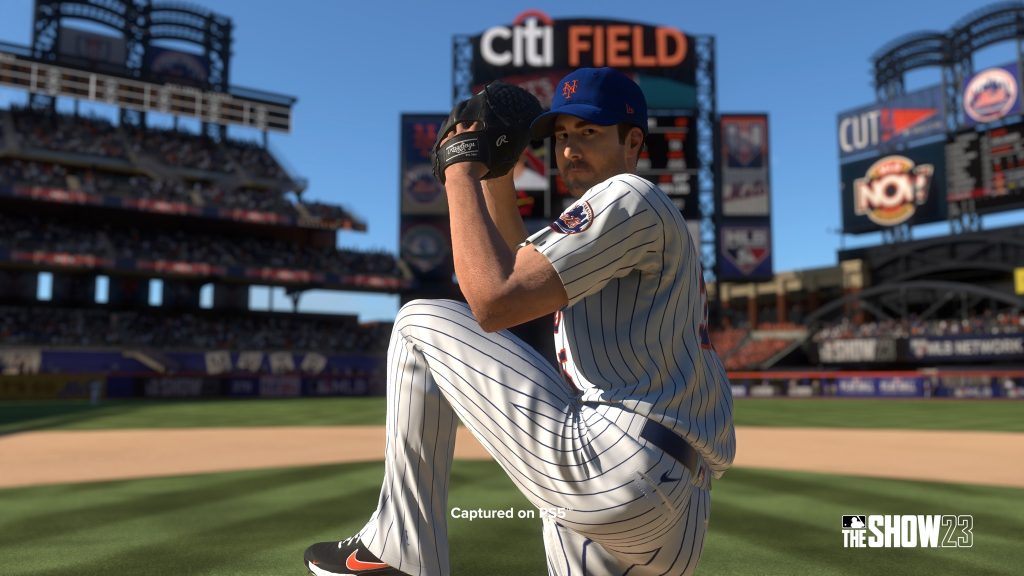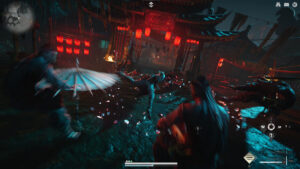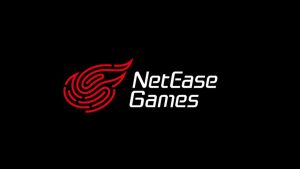This year’s installment of MLB: The Show is out now on PS4, PS5, Xbox One, Xbox One Series X|S, and Switch, and spoils players for choice with how they can fine tune their playtime with the game. Here are the best options for hitting, fielding, and pitching in MLB: The Show 23, as well as your best bet at hitting one out of the park.
Hitting Style Settings
There are three different types of Swing Input in the Settings, and these determine what exactly must be pressed or pulled to initiate a swing of the bat.
- Buttons, one for each of the three types of swing:
- Contact Swing: Circle (PS), B (XB)
- Normal Swing: X (PS), A (XB)
- Power Swing: Square (PS), X (XB)
- Analog Sticks, where pushing in one of the four cardinal directions determines swing type:
- Contact Swing: Right Stick Up
- Normal Swing: Right Stick Left or Right
- Power Swing: Right Stick Down, then flick Up
- Analog Stride, using both buttons and sticks in conjunction, where swing type is pre-determined by you using the buttons before the pitch is thrown, and then using the sticks to time the swing just right
- Cue Contact Swing before pitch delivery: Circle (PS), B (XB)
- Cue Normal Swing before pitch delivery: X (PS), A (XB)
- Cue Power Swing before pitch delivery: Square (PS), X (XB)
- Swing: Right Stick Down to begin batter stride followed by RS Up to initiate swing
While Analog Stride is the most rewarding, it is also obviously the hardest, and the effort would be better served being put into mastering the Hitting Interfaces, and simply using the Buttons for Swing Input.
There are three different types of Hitting Interface, in order of difficulty:
- Timing, the simplest, is merely a matter of pressing the button corresponding to the swing type of your choosing. Recommended for beginners and casual players, this one’s results are random and cannot be controlled by you. There isn’t any surefire timing to getting a home run, and you’ll barely get much distance on ground balls.
- Directional, combines timing with letting you observe where the incoming pitch is going to be in the strike zone and then using the left stick to determine ball flight post-hit. A good bridge to the Zone method. Recommend turning off the jarring Directional Camera Shifting under Settings, to spare your senses
- Zone, is what players should evolve to eventually. A complex system with several settings to tweak aesthetically, Zone allows hitters to actively determine where the bat is going to swing in real time, through the use of the Plate Coverage Indicator (PCI). Timing remains a factor, as does swing type, but this Hitting Interface gives the player absolute control over hitting pitches. An onscreen reticle consisting of two pairs of concentric arcs can be positioned within the PCI at your discretion. Ideally, having the ball fly within the smaller, inner pair will produce the best result. Vertical placement will determine where your batted balls go: aiming low produces pop-ups, while aiming high results in ground balls. Post-contact with the ball, an inset will appear in the bottom left displaying immediate feedback on your swing and timing, as well as how accurate you were with your PCI placement of the reticle using a snapshot of the PCI, the reticle, and the final position of the ball itself.
How To Hit A Homerun
Tip the scales in your favor for hitting a homer out of the park, by tweaking the control and visual interface settings of your game:
- Avoid the catcher camera, and choose between one of the strike zone cameras instead, preferably one that’s tight up against the batter, and magnifies the pitcher to the maximum on screen. With the strike zone filling your screen, it’s far easier to see the incoming pitch, and react accordingly
- Tweak the onscreen display of the PCI to your liking, so that its colors are easy to see and indicators easy to interpret. Disable PCI Fadeout, so you can quickly assess your hits and misses
- Use the Analog Stride Swing Input method in conjunction with the Zone Hitting Interface to exert complete and absolute control over your swings
Fielding Style Settings
Introduced for the first time this year in MLB: The Show 23 is the new Button Accuracy Throwing Interface. It is one of three Throwing Interfaces available:
- Buttons where the four bases of a baseball diamond correspond perfectly to the face buttons on the controllers
- Throw to Cutoff: L1 (PS), LB (XB)
- Throw to Home: X (PS), A (XB)
- Throw to 1st Base: Circle (PS), B (XB)
- Throw to 2nd Base: Triangle (PS), Y (XB)
- Throw to 3rd Base: Square (PS), X (XB)
- Analog where directional pushing on the right thumbstick corresponds to bases on the diamond. Both Buttons and Analog rely solely on the statistical value of the fielder’s Arm Accuracy attribute, rather than any player intervention
- Button Accuracy gives players full control over fielding with quick-reaction minigame overlays for fly balls and throw meters for catching runners out at bases.
For fly balls, once the ball is in flight, a visual indicator of a large baseball appears on the field, getting smaller and smaller as it approaches the ground, giving you enough time to position your outfielder in its center, in order to catch the ball. If the ball is predicted to land near the outfield wall, a trio of yellow chevrons pointing upward will appear at the location. As the ball heads to the ground, each chevron will turn green in succession. Catch the ball, using Jump by pressing R2 (PS) or RT (XB), when all three are green.
The Throw Meter is an onscreen indicator depicted as a quadrant gauge over a fielder, and consists of a needle that moves over three colors: green, sandwiched by yellow on either side, and red on either side of yellow until the ends. Throwing on green is ideal, with red being the obvious worst choice. As for throwing on yellow, the fumbling mechanics have changed this year, and instead of being an almost certain failure all the time, statistically good basemen can and will recover from bad throws by picking up the ball out of the dirt. Also new this year: the color spectrum on the gauge isn’t centered perfectly, and can move from one extreme end to the other, making the minigame somewhat dynamic and challenging in nature.
In the outfield, the Throw Meter dynamics change again. Yellow is eliminated, and green narrows even more. This represents the long distance throwing involved. Centered within the green is an even narrower blue sliver, which represents the very best accuracy that can be achieved while throwing the ball all the way back to base.
Pitching Style Settings
Of the five available pitching styles available to players, one stands out as the majority favorite for complete control of pitches: Pinpoint. Expectedly, it is also the hardest to master, with perfect dual thumbstick control being necessary in order to achieve the perfect pitch. Begin by moving the left analog stick to aim, and then use the right analog stick to play a minigame inside of a small circular overlay.
The mechanic requires you to follow a specific path at a specific speed and then hit two blue circles consecutively with the thumbstick. The path shapes correspond to pitch types–e.g. a straight line for a fastball–while the circles can be anywhere within the overlay, and also pulse in size. Hitting the circles at their smallest is the goal, for achieving greater accuracy.
While thumbstick speed and timing is critical for tracing the path and tagging the first circle, it is NOT required for hitting the second circle. Rather than randomly flicking at it in a panic, take a breath, and time it to release your pitch correctly.
Here’s a quick rundown on the other pitch styles:
- Classic is the oldest of old-school pitching implementations, from every baseball game ever, going back decades. First select the pitch type using X, Circle, Square, Triangle, R1 (PS) or A, B, X, Y, RB (XB), then aim using the left stick. Initiate the throw using X (PS) or A (XB), and let the player statistics determine the result.
- Meter is a simple minigame-based pitch style similar to those in other game genres that involve fishing or golfing. After selecting a pitch type, a meter in the shape of a quadrant circle will appear on screen. Set aim, and then begin a sequence of three button presses to throw the pitch: the first to initiate the needle on the meter, the second to set power, and the third to determine accuracy. What makes it hard is how slender the margins and timings are for executing it correctly, exacerbated by the effects of ever-decreasing pitcher stamina, as the inning wears on
- Pure Analog is accomplished in a similar manner to the dual thumbstick system of Pinpoint but without the complex tracing minigame. Select pitch type, aim the reticle with the left stick, draw back the right stick on the onscreen power meter in order to hit the needle, and then flick it back up towards the reticle when it does. This requires accurately matching the final resting positions of both left and right thumbsticks
- Pulse is next in simplicity to Classic, but is the most annoying of pitch styles. In a manner reminiscent of bullet spread reticle mechanics which expand or shrink to determine accuracy, this aiming overlay simply pulses both rapidly and incessantly with no nuance in rhythm. It requires nothing more than timing a button press just right, i.e when the circle has contracted to its smallest. As with Classic, there is no velocity control to be exerted.
Enjoy this year’s outing of MLB: The Show!















